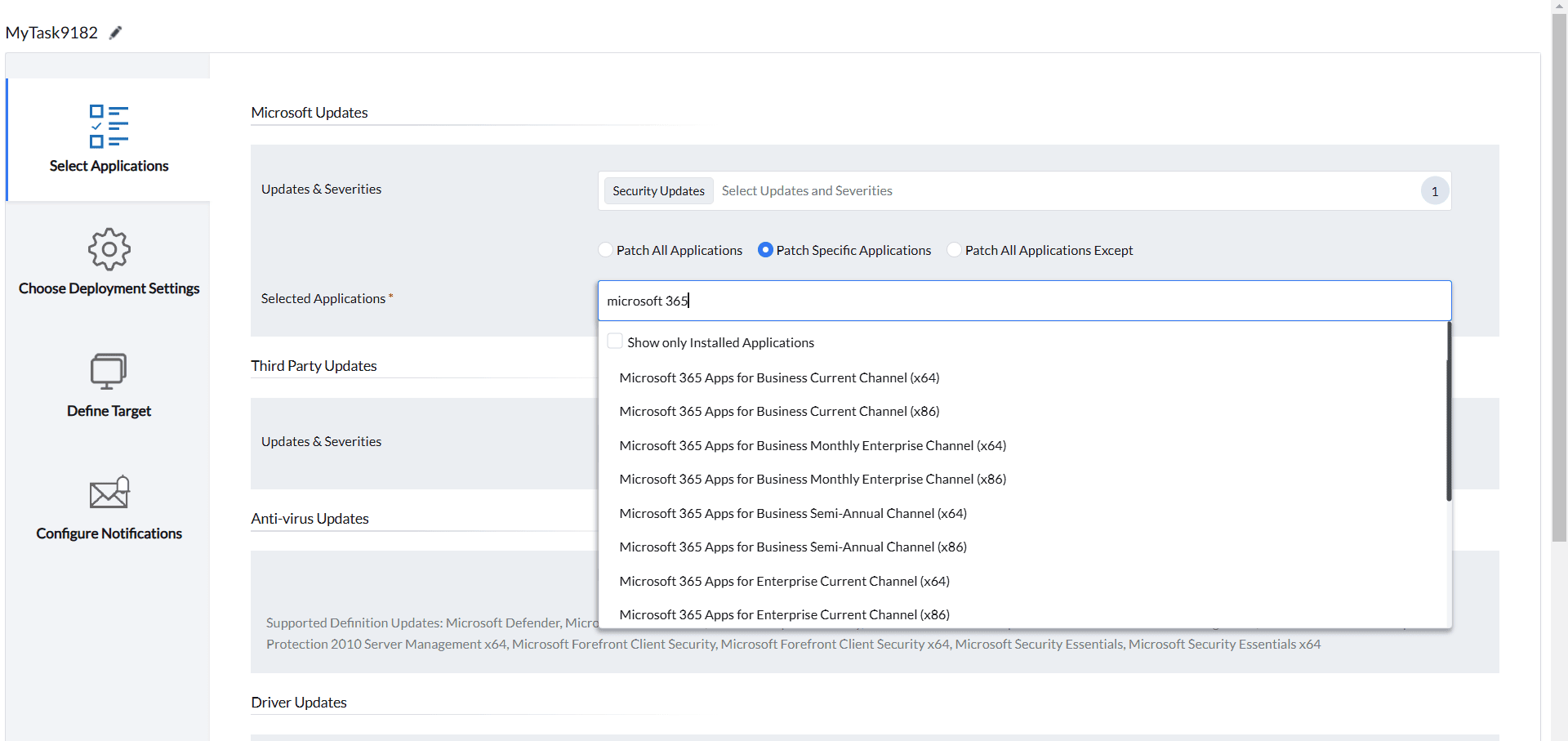

Microsoft Office products are the most widely used business productivity software worldwide. Hence, it is imperative for enterprises to keep them secure and functional by installing Office updates released regularly. This document provides an overview of how Endpoint Central has enhanced the Office update process with the Click-to-Run technology.
Note: This feature is available for build numbers 10.1.2137.1 and later builds.
Click-to-Run was a technology introduced by Microsoft to deliver and update Office 2010 products. It is now used by Office versions 2010, 2013, 2016 running on the Microsoft 365 subscription model. Click-to-Run is an alternate installation type for Microsoft products that uses streaming and virtualization to reduce the time taken for installation and to help run multiple versions of Office on the same system.
Click-to-Run products use streaming, so Office applications can be used before the whole suite or product is downloaded completely. After download, Office is stored inside a virtualized application space. This virtual space separates Office Click-to-Run applications from existing Office versions thereby enabling multiple versions of Office to run on one system.
The Office Click-to-Run update settings in Endpoint Central gives users the option to choose the language packs and additional proofing tools that they want downloaded with their Office updates. Further users can automate the process of adding newly discovered languages in the network to their selected language packs list and also choose to re-download old updates with new ones once a new language pack has been added.
The Click-to-Run technology was adopted to enhance the download and installation process of Office applications. Similarly Office updates have certain concerns when they are being downloaded. For instance, Office applications cannot be patched when they are in use and they consume more bandwidth per agent. To avoid these effects, to support more language packs, and to manually allow users to install updates, Endpoint Central has come up with the Office Click-to-Run update settings.
Click on Threats & Patches → Settings → Office Click-to-Run Settings.

Once in there, you have the options to select the Language Packs to be downloaded with the updates and Additional Proofing Tools you want downloaded with your office updates. Select the languages of your choice. Make sure you select the language of the proofing tools already installed in your environment to avoid installation failures, along with any additional ones you might need.
Enable the option Automatically add Office Click-to-Run application languages, newly discovered in the network to the selected Language Pack list to automatically include any newly added language packs in your preferred language list.
If you want your already downloaded Office updates re-downloaded in the instance of a new language added to your preferred list, enable the option Re-download old updates with the newly added language packs.
Under the section Download source for Distribution servers, select the download source as:

Under the How would you like to proceed with installation when Office applications are in use section, choose:
After configuring the Office Click-to-Run Settings, click on Save.
Once these settings are enabled, the Office Click-to-Run patch build is downloaded to the server by the Office deployment tool and maintained in the server store. Instead of downloading the entire zip, the agent only downloads necessary files (language packs and additional proofing tools) during the update process. This saves substantial agent bandwidth and supports more language packs. Manually updating Office Click-to-Run applications becomes possible as the process resets the UpdateURL once patching is done. These settings also leverage native end-user notifications that Office Click-to-Run updates use to keep end users informed about the update process. Overall, these settings streamline the Office update process and reduce the likelihood of updates failing or becoming corrupt.
Note: This feature will include an extracted folder of about 7 GB in addition to the zip file already present, which will take up Disk space. This is the expected behavior of this feature and users don't have to worry about the reduced Disk space.
You can deploy the patches either manually or using an Automate Patch Deployment Task. Ensure that you customize the deployment policy to initiate patch deployment during system startup. This approach ensures that patches are applied before users begin their work, preventing interruptions to Office applications and other productivity tools during business hours.
Under Missing Patches tab, you can search and filter the required Microsoft 365 patches. To learn more about how to manually deploy patches manually, refer to this page.
You can automate the patching of Microsoft 365 applications by creating an Automate Patch Deployment task.

When you are creating an APD task, under Select Applications section, after choosing the Updates & Severities of your choice, enable Patch Specific Applications and under Selected Applications if you type 'microsoft 365', you can see all the supported Microsoft 365 applications listed. You can choose to add whatever applications that you want to be deployed with this APD task. After choosing the desired applications, configure other options and choose required targets where you want to automate Microsoft 365 patching. By doing these, the deployment approved Microsoft 365 patches for those chosen applications will be automated in those chosen targets. To learn in detail about creating Automate Patch Deployment tasks, refer to this page.
During the patching process, you might run into problems either during the download or installation of Microsoft 365 patches.
To troubleshoot download failures, refer to this page.
To troubleshoot Installation failures, refer to this page.
If you have any further questions, please refer to our Frequently Asked Questions section for more information.